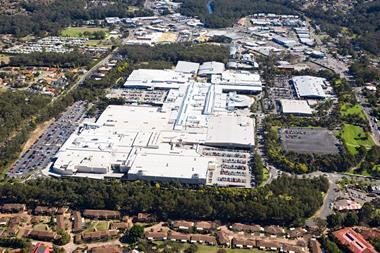Abundant liquidity, an array of regulations, and still fresh memories of the recent financial crisis have so far limited the potential for structured products in Asia, writes Lynn Strongin Dodds
Given the tumultuous nature of the markets recently, it is no surprise that the Asian securitisation market is quiet. Exposure to US sub-prime may be low, but the ripple effects have been felt across the region's debt spectrum. As a result, investors and companies interested in issuing commercial and residential mortgage backed securities are adopting a wait-and- see approach.
This is in contrast to the beginning of the year where analysts were predicting that activity would increase in China, residential mortgage backed securities (RMBS) would appear in Thailand, and established trends such as cross border RMBS from Korea and Taiwan, and commercial backed securities from Singapore, would accelerate. Instead, first quarter activity was disappointing. According to a report by HSBC, issuance stood at roughly $5bn (€3.7bn) compared to $35bn for the whole of 2006. Collaterised loan obligations, collaterised bond obligations and collaterised debt obligations represented the bulk at 46% with CMBS accounting for 16% and RMBS at 9%.
While the sub-prime troubles may put a temporary dent in the development of the region's securitised real estate industry, few participants expect it to have the same impact as in the US, UK and Europe, where the banks are more vulnerable. For example, at the beginning of the year, some industry experts predicted that European issuance of CMBS would hit €100bn after setting a record of roughly €61bn in 2006 which itself was more than 30% ahead of the previous year. This may now be in doubt. Activity was significant until July when issuance almost ground to a halt at a mere €1.5bn, down substantially from €14.6bn in June and €11.3bn in July 2006.
In general, Asian banks have mainly focused on domestic lending and have limited interest in US mortgages. Although some of the region's larger players have invested in more risky US debt structures, credit rating agency Standard & Poor's judged the exposure to sub prime mortgage-related instruments to be "either minimal or manageable".
Moody's Investor Services echoed these sentiments in a recent report which noted there were no negative rating implications for Asian banks because the bulk of their foreign currency investments continue to be held in highly rated (single-A or better) government and corporate bonds.
In fact, the main reasons behind the relatively slow development of Asia's securitised real estate markets are a combination of cultural factors as well as a panoply of regulations. Unlike the established US industry which has the benefit of a uniform set of regulations or Europe, which is trying to synchronise its rules, each country in the region operates its own set of regulations, property registration systems and mortgage origination practices. Also, the mindset is seemingly different. The US investment banks may have successfully led the RMBS and CMBS charge on their home turf as well as in the UK and Europe, but they have not been as successful in Asia. Property companies still prefer to do business the old-fashioned way - a straight bank loan.
As Michael Montelibano, director of Asia capital markets for Jones Lang LaSalle in Singapore, observes: "The preferred source of debt financing for property remains the plain vanilla loan. Outside of the REITs and publicly listed real estate companies, it is still rare to see a RMBS or CMBS structure in Asia Pacific to fund property acquisitions. This is because there is still plenty of liquidity in the market and banks are aggressively vying with each other to offer competitive rates. Also, the time-frames to do these loans is shorter than a securitised product which can take a while because each piece needs to be rated separately."
In addition, despite the region's vastly improved fortunes, memories of the 1998 Asian financial crisis still linger, and means investors and institutions have adopted a more cautious line over the past 10 years. Alan Chow, Singapore-based director of research at Pramerica Real Estate Investors (Asia) Pte, the real estate investment management business of Prudential Financial in the US, notes: "Central banks learnt their lessons and lending practices became much more prudent and conservative after the Asian crisis. No one wants a repeat of the liquidity crunch of 10 years ago. As of now, investors are much more interested in real estate funds or investing directly into the physical assets than in structured products. They will typically hold the properties for about four to five years and then sell them back to the market."
Kohei Hashimoto, an analyst with Fitch Ratings, structured finance in Tokyo, confirms that the investor base has not expanded and diversified in Japan as expected. "The appetite has grown but the number of participants may not be as broad as it is in other major markets. We anticipated it to be wider. Currently, pension funds are not big investors although we hear of some moving in the direction of investing in structured products. The most active investors in CMBS, for example, are banks and insurance companies," he adds.
Hashimoto also noted that while there was an influx of foreign investors searching for better yields in the latter part of 2006 and the first half of this year, they have since retreated in the wake of the recent bout of volatility. "We may not see Japanese CMBS deals marketed to foreign investors until their domestic markets (US and Europe) settle down. However, the overseas marketed portion has not been that great and we believe that overall 2007 CMBS issuance will be similar to, or more likely, exceed 2006. We have not seen any deals being cancelled although in some cases, the marketing periods have been extended."
According to figures from Fitch Ratings, issuance in the Japanese structured product market totalled JPY1.1trn (€7bn), up 12.5% from 2005 figures. RMBS accounted for the biggest chunk at almost 57% followed by CMBS with a 14% share or JPY 1.4trn, a slight dip from 2005. Securitisation of multi-borrower structures as well as non-recourse loans whose main source of repayment is the liquidation of properties, continues to dominate the commercial securitised scene. While a buoyant property market has been one of the drivers, these products have also faced increased competition from cash-rich banks more than willing to extend credit with quick and easy loans.
As for the country's RMBS market, there are question marks over its immediate future as the biggest issuer, the Government Housing Loan Corp, was restructured into an independent government agency in March. GHLC's remit now is to support private financial institution's efforts to originate RMBS structures. Naturally, it is too early to predict the success it will achieve but market participants believe that issuance may slip this year.
Looking at the rest of the region, ex-Japan, Singapore and South Korea are again expected to be the most active players, particularly on the cross border front. Standard Chartered First Bank Korea, which is part of Standardw Chartered, won plaudits last year as sole bookrunner for the $1.26bn RMBS issued by Korea First Mortgage. The transaction made the news as the first ex-Japan Asian asset backed security to puncture the $1bn ceiling as well as to include euro-denominated notes.
This year SCFB came to the market with a similar deal. The $1.3bn RMBS for Korea First Mortgage, the seventh to date, consisted of short and medium dated euro and dollar tranches at the triple-A level. Although market participants had hoped that SCFB's success would have prompted local banks to take the RMBS plunge, it is unlikely to happen this year.
In fact, Kookmin Bank, one of the country's leading mortgage lenders recently decided to postpone its issue to 2008 mainly due to fears of complaints from existing mortgage customers who were worried that they would be unable to alter their mortgage terms once their debt was locked up in a special purpose vehicle prior to securitisation.
The Singapore market differs in that real estate investment trusts are the most dynamic and innovative issuers. Last year, the headline grabbing deal was the $652m CMBS from RCS Trust - a joint venture between CapitaCommercial Trust (CCT) and CapitaMall Trust (CMT). The transaction was not only the region ex-Japan's largest CMBS but it was the first to include hotel assets as collateral. Proceeds raised were partly used to finance CMT and CCT's $3.3bn acquisition of the Raffles City complex.
Chow of Pramerica believes that REITs will continue to be a prevailing force in the CMBS market particularly as they are rapidly expanding. The first trust was only listed five years ago but today there are 16 with a total market capitalisation of $26bn. "REITs are on a fast track and they are trying to emulate the US model. They see securitisation as a good channel to raise more capital, refinance assets and make acquisitions," adds Chow.
Not surprisingly, investment banks are eagerly anticipating developments in China given the country's current construction boom. At the end of 2005, there was one pilot deal on the property front - China Construction Bank's RMB3bn RMBS and in 2006, the market witnessed the first cross border CMBS. Issued by Dynasty Asset Holdings, the deal worth $145m did not attract a great following as investors were concerned about the enforceability of China's legal framework, according to research from Fitch.
Also, investors reportedly had some concerns that some of the nine underlying retail properties were not secured with mortgages.
Looking ahead, there have been rumours that GZI REIT, the Hong Kong-listed trust that owns purely mainland China properties, is planning a $150m CMBS this year while CapitalRetail China Trust listed in Singapore is also thought to be contemplating a move. So far, it has just been talk. One problem, according to the Fitch report, is that the Dynasty deal can no longer be used as a template given that the rules concerning what constitutes an acceptable structure changed last July. As a result, the mortage backed securities market may take a longer time to develop than had hoped.












